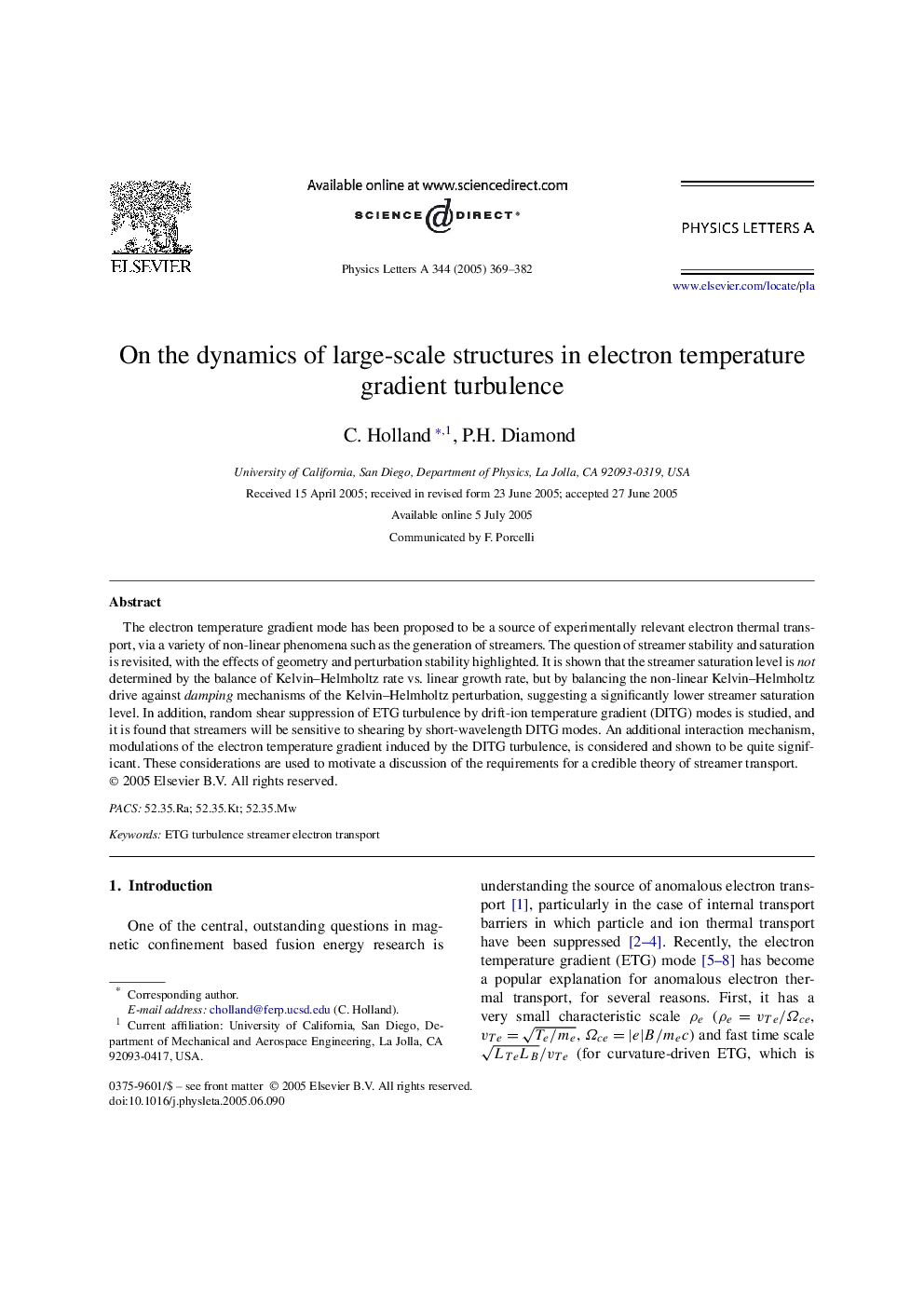| Article ID | Journal | Published Year | Pages | File Type |
|---|---|---|---|---|
| 10727905 | Physics Letters A | 2005 | 14 Pages |
Abstract
The electron temperature gradient mode has been proposed to be a source of experimentally relevant electron thermal transport, via a variety of non-linear phenomena such as the generation of streamers. The question of streamer stability and saturation is revisited, with the effects of geometry and perturbation stability highlighted. It is shown that the streamer saturation level is not determined by the balance of Kelvin-Helmholtz rate vs. linear growth rate, but by balancing the non-linear Kelvin-Helmholtz drive against damping mechanisms of the Kelvin-Helmholtz perturbation, suggesting a significantly lower streamer saturation level. In addition, random shear suppression of ETG turbulence by drift-ion temperature gradient (DITG) modes is studied, and it is found that streamers will be sensitive to shearing by short-wavelength DITG modes. An additional interaction mechanism, modulations of the electron temperature gradient induced by the DITG turbulence, is considered and shown to be quite significant. These considerations are used to motivate a discussion of the requirements for a credible theory of streamer transport.
Related Topics
Physical Sciences and Engineering
Physics and Astronomy
Physics and Astronomy (General)
Authors
C. Holland, P.H. Diamond,
